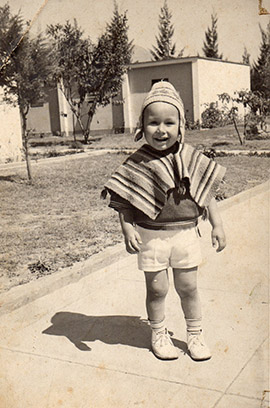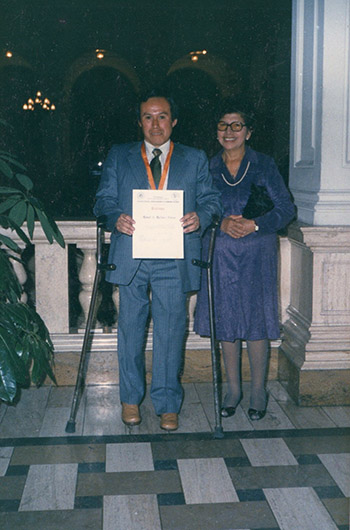May 19, 2019 - When Manuel Martinez Rosas – known as Lulo by his friends and family – was diagnosed with poliomyelitis at 3 years old, his mother´s greatest fear was that he would never live independently.

Poliomyelitis, also known as polio, is caused by a highly contagious virus that is typically spread through contaminated water. It attacks the nervous system, sometimes leading to paralysis.
In the early 1960s, Peru suffered a large polio outbreak that impacted children across the country. After being taken to the hospital for high fever, malaise, loss of appetite, and weakened, shaking limbs, it became apparent that Lulo was one of them.

Thanks to rehabilitation at the hospital, however, Lulo learned to walk, first with crutches, and then with canes. Before long, he was participating in sport, including swimming and soccer, and later won a full scholarship from the Inca Garcilazo de la Vega University School of Journalism in 1992 with a full-tuition scholarship.
In 1966, Peru introduced the polio vaccine, which led to a 90% decrease in cases between 1979 and 1984.
In the 1960s and 1970s, work carried out in Cuba and Brazil showed the world that polio elimination could be achieved, and in 1985, PAHO Member States unanimously adopted a Resolution to eliminate endemic transmission of wild poliovirus in the Americas.
By scaling up vaccination activities, strengthening surveillance, increasing laboratory support, collaborating among different sectors and agencies, and training health care workers, the Region achieved its elimination goal in 1991. Three years later, the International Commission for the Certification of Poliomyelitis Eradication declared the Region of the Americas as the first in the world to be declared polio-free.
Although the polio vaccine arrived too late to prevent Lulo from contracting the disease, he is optimistic about the prospect of a polio-free world for future generations; a world with “healthy childhoods, where kids can achieve their dreams without barriers” wherever they are.


